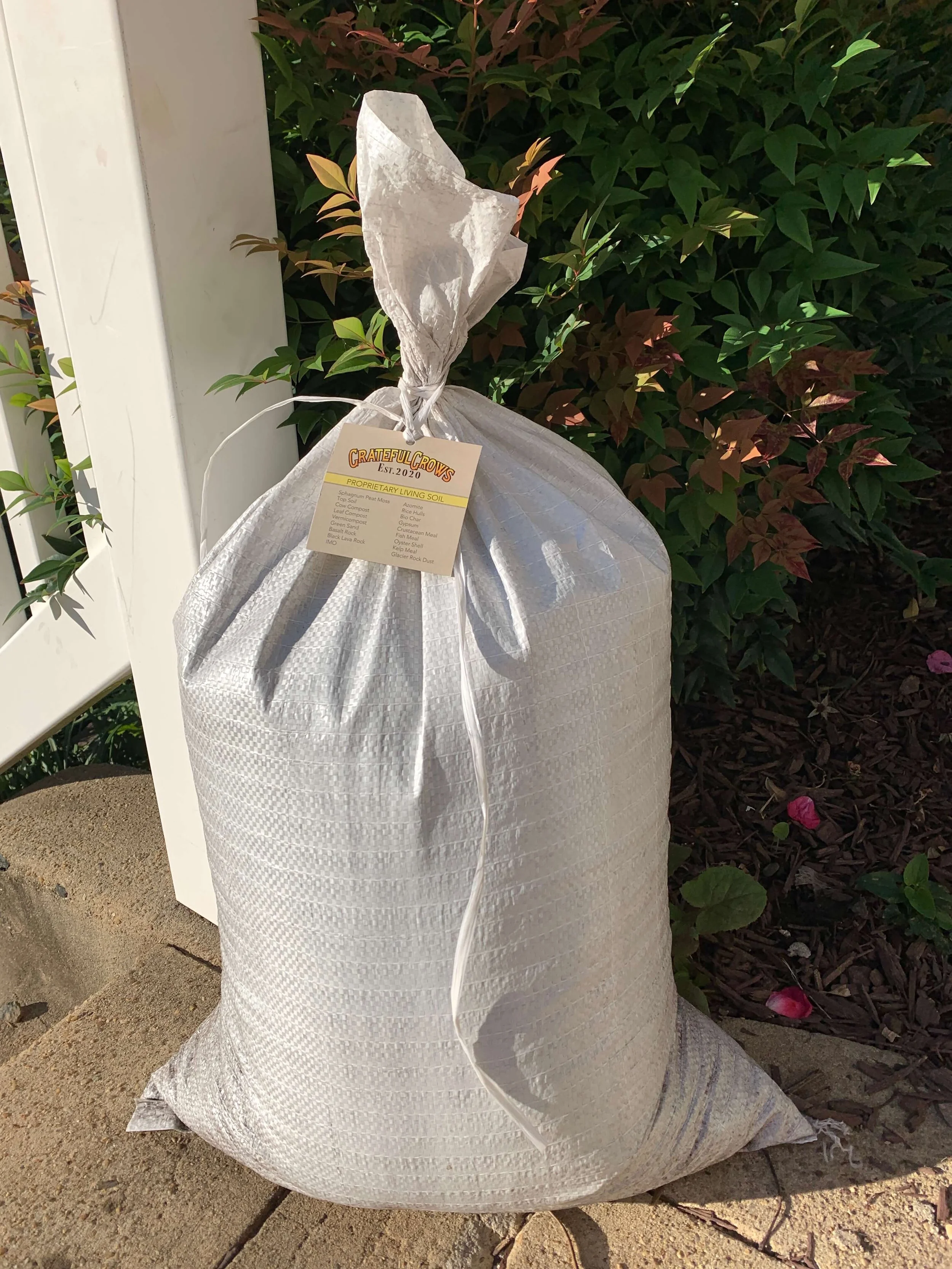
The soil population must be considered from the point of view of a biological complex; it is not sufficient to separate it into different constituent groups.
S.A. Waksman, 1923
IMO4 (option) ~
Fermented Fruit Juice ~
Fermented Plant Juice ~
LABS ~
WSC ~
WS-Ca/P ~
IMO2 ~
IMO4 (option) ~ Fermented Fruit Juice ~ Fermented Plant Juice ~ LABS ~ WSC ~ WS-Ca/P ~ IMO2 ~
GRATEFUL BUNDLE ~
GRATEFUL BUNDLE ~
GRAB A GRATEFUL BUNDLE AND START GROWING NATURALLY!
Watch a new YouTube video of George explaining
everything you need to know about our
Grateful Bundle
VERY INFORMATIVE
Plant A Garden, Grow With Us
Grateful Grows’ is your answer to Organic Gardening with Living Soil. We’re on a mission to bring you the freshest, most natural handcrafted products to help you achieve thriving natural growth, no matter what it is you’re growing.
Our principles are based on the Korean Natural Farming (KNF) method, and we use the No-Till Farming technique. The handcrafted KNF products we currently offer are in our Marketplace.
Our Grateful Bundle is intended to cover your entire grow cycle needs, from seed to harvest, and give your plants that extra little boost they might need at a specific stage of growth, providing increases in growth, bigger yields, and more terpene-rich flowers with a higher cannabinoid percentage.
Our Living Soil is mixed by George using only natural ingredients as the building blocks for the freshest soil for your organic gardening. And the best part is our soil is meant to be reamended and used over and over again, saving you money.
There are no synthetic nutrients, additives, herbicides, or pesticides in our products, which fits in with the conscious shift toward growing naturally.
What is No-Till Farming?
The idea of modern no-till farming started in the 1940s with Edward H. Faulkner, author of Plowman's Folly, but it was not until the development after WWII of powerful herbicides such as paraquat, a highly toxic herbicide used to control weeds and grass. The U.S. Environmental Protection Agency restricted paraquat use to commercially licensed users. Paraquat poisoning through ingestion, inhalation, or skin exposure can lead to serious health problems, including death. It was then that various researchers and farmers started to try out the idea of
No-till Farming.
What is Living Soil?
Living soil contains a diverse group of microorganisms working collectively to digest and break down the organic matter in the soil. This provides the needed nutrition for your plants and other surrounding microorganisms. This no-till soil serves as its own ecosystem, known as the Soil Food Web, and includes microscopic bacteria, algae, fungi, and protozoa; more complex life forms like nematodes and micro-arthropods, and visible creatures such as earthworms, insects, and small vertebrates.
The Importance OF Soil Health
Soil is not an inert growing medium – it is a living and life-giving natural resource. It is teeming with billions of bacteria, fungi, and other microbes that are the foundation of an elegant symbiotic ecosystem.
Soil health is defined as the continued capacity of soil to function as a vital living ecosystem that sustains plants, animals, and humans. Healthy soil gives us clean air and water, bountiful crops and forests, productive grazing lands, diverse wildlife, and beautiful landscapes. Soil does all this by performing five essential functions:
Regulating water – Soil helps control where rain, snowmelt, and irrigation water goes. Water flows over the land or into and through the soil.
Sustaining plant and animal life – The diversity and productivity of living things depend on soil.
Filtering and buffering potential pollutants – The minerals and microbes in the soil are responsible for filtering, buffering, degrading, immobilizing, and detoxifying organic and inorganic materials, including industrial and municipal by-products and atmospheric deposits.
Cycling nutrients – Carbon, nitrogen, phosphorus, and many other nutrients are stored, transformed, and cycled in the soil.
Providing physical stability and support – Soil structure provides a medium for plant roots. Soils also provide support for human structures and protection for archeological treasures.
Soil health research has determined how to manage soil in a way that improves soil function.
As world population and food production demands rise, keeping our soil healthy and productive is of paramount importance. By farming using soil health principles and systems that include no-till, cover cropping, and diverse rotations, more and more farmers are increasing their soil’s organic matter and improving microbial activity. As a result, farmers are sequestering more carbon, increasing water infiltration, and improving wildlife and pollinator habitats—all while harvesting better profits and often better yields.
https://www.nrcs.usda.gov/wps/portal/nrcs/detailfull/national/soils/health













